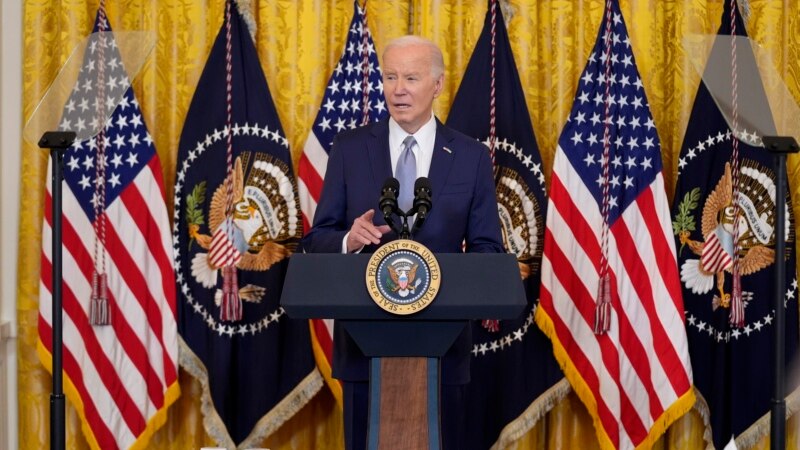
U.S. President Joe Biden on Friday announced a significant sanctions escalation against Russia, targeting its financial system and military infrastructure with over 500 new penalties, marking the largest tranche of sanctions since Moscow’s invasion of Ukraine nearly two years ago.
The measure was announced ahead of the invasion’s anniversary on Saturday and followed the death of Russian opposition leader Alexey Navalny in a penal colony in the Arctic earlier this month.
The sanctions target various sectors, including Russia’s state-owned National Payment Card System, banks, investment firms, venture capital funds and other financial institutions, its defense industry and procurement networks. They also target individuals involved in evading sanctions, in Russia and abroad, as well as prison officials who Washington believes to be linked to Navalny’s death.
Urging lawmakers in the House of Representatives to pass the $95 billion Senate-approved supplemental funding measure that includes additional military aid for Kyiv, Biden vowed to respond with further punishment for Russian President Vladimir Putin.
“We in the United States are going to continue to ensure that Putin pays a price for his aggression abroad and repression at home,” he said Friday. Failure to do so, he warned, would embolden further aggression in Ukraine and worldwide.
Since Moscow’s invasion, Washington and its allies have imposed sanctions on thousands of Russian targets. Friday’s package includes nearly 300 people and entities targeted by the U.S. Treasury Department, as well as 250 people and entities targeted by the State Department. The Commerce Department added over 90 companies to the entity list.
However, simply adding individuals and companies with no links to the United States and arguably with limited links to the world outside of Russia at large is ineffectual, said Dalibor Rohac, a senior fellow at the American Enterprise Institute.
Instead, the administration should better coordinate with allies to prevent existing sanctions evasion, especially for those related to oil revenue, Rohac told VOA.
“And a seizing of Russia’s sovereign assets overseas — particularly its central bank reserves,” Rohac said.
Beginning in December 2022, the U.S. and its allies imposed a $60 per barrel cap on Russian oil, limiting services such as insurance and trade finance for shipping Russian oil sold above that price.
According to a Treasury Department analysis released Friday, the cap has reduced Russia’s oil income. Over the past month, the policy forced Russia to discount its oil by $19 per barrel.
The cap, combined with a European Union ban on nearly all Russian oil imports, was designed to choke funding to Putin’s war machine. However, countries can still legally buy Moscow’s crude if it is refined elsewhere, including in Turkey and India.
“As long as Russia can continue to sell their oil, they’ll be able to continue buying missiles, and bullets and pay for soldiers,” William Browder, head of the Global Magnitsky Justice Campaign, told VOA. “As long as we allow that, then this war is never going to end.”
Earlier this week the EU also slapped Moscow with a new round of sanctions, focusing on fighting sanctions evasion by targeting companies around the world accused of providing Russia with advanced technology and military goods.
Nearly 200 people and entities, mostly from Russia, have been added to the entity list, now totaling more than 2,000 individuals and entities.
For the first time, the EU sanctions are hitting companies in mainland China suspected of helping the Kremlin. Companies from India, Turkey, Serbia, Kazakhstan, Singapore, Thailand, Sri Lanka and Hong Kong are also targeted.
Cindy Saine contributed to this report.
